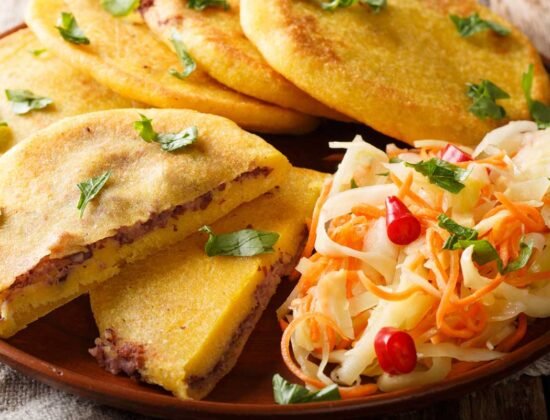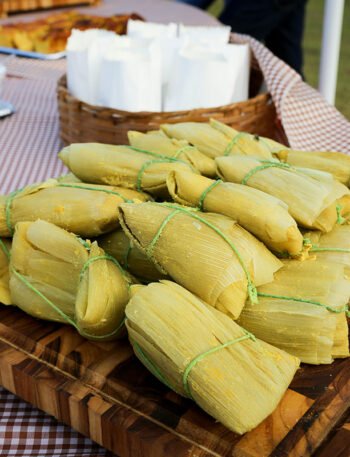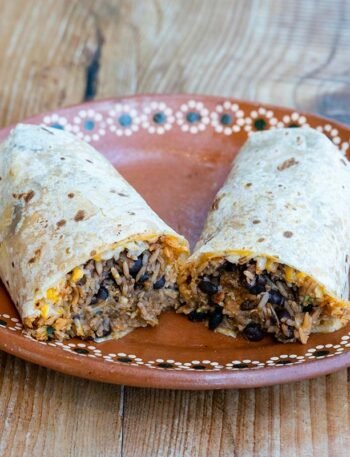Pupusas are one of the most iconic foods of El Salvador, where they are celebrated as the national dish. But these thick, filled corn tortillas are not exclusive to El Salvador. They are also commonly found in neighboring Guatemala and parts of Honduras, where similar versions have been made and enjoyed for generations. While the Salvadoran pupusa is the most widely known version, the dish reflects a shared regional tradition that crosses borders and brings people together through food.
Made from masa, a type of corn dough, and filled with ingredients like cheese, beans, or seasoned meat, pupusas are simple yet deeply satisfying. They are usually cooked on a hot griddle and served with curtido, a lightly fermented cabbage slaw, or a tomato-based sauce. This combination of textures and flavors makes pupusas both comforting and memorable.
Historical Origins
The origins of pupusas go back more than a thousand years to the Indigenous peoples of Mesoamerica. Groups such as the Pipil and Maya, who lived in what is now El Salvador, Guatemala, and Honduras, made early versions of stuffed corn tortillas. These were often filled with squash, beans, herbs, or other locally available ingredients. Corn was central to their diet, and masa was a daily staple.
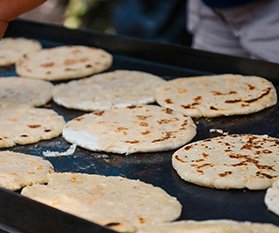
While the name pupusa is most closely tied to El Salvador today, similar foods existed in neighboring cultures long before modern borders were drawn. Likely, variations of the dish developed independently in different areas, with each region adapting the ingredients to match local preferences and resources.
When the Spanish arrived in the 1500s, they introduced new ingredients like pork, cheese, and certain spices. These additions were eventually incorporated into indigenous cooking traditions. Over time, the pupusa became a blend of Native and Spanish influences, with fillings evolving to include cooked pork, soft cheeses, and other flavors that are now considered traditional.
Cultural Significance in El Salvador
In El Salvador, pupusas are more than just a popular meal; they are part of the national identity. They are eaten at home, sold at markets, and served in dedicated restaurants called pupuserías. Pupusas are a source of pride for many Salvadorans, both within the country and among communities abroad.
In 2005, El Salvador officially declared the pupusa its national dish and established the second Sunday of November as National Pupusa Day. On this day, families and businesses gather to celebrate the food with festivals, music, and, of course, lots of pupusas. Some towns even host competitions to see who can make the largest or most creative version.
The pupusa is also a symbol of resilience and entrepreneurship. For decades, Salvadoran women have supported their families by making and selling pupusas from home or small stalls. These businesses often serve as gathering places for the community and are passed down from one generation to the next.
Pupusas Beyond El Salvador
While El Salvador has done the most to promote pupusas as a cultural emblem, similar foods exist in Guatemala and other parts of Central America. In some areas of Guatemala, especially those near the Salvadoran border, pupusas are made in much the same way, often using local cheese and beans. These versions may not carry the same national recognition, but are still a part of everyday life for many Guatemalan families.
The similarities in preparation and ingredients point to a shared culinary history that predates the formation of modern countries. In rural Guatemalan towns, it’s not uncommon to find pupusas sold at small roadside stands or local markets, often made by hand and served with curtido. Although the name “pupusa” may not be as widely used outside El Salvador, the food itself is familiar across the region.
In Honduras, particularly in the western parts near El Salvador, pupusas are also made and enjoyed. These often include local ingredients and may differ slightly in size or shape. Even in southern Mexico, foods like gorditas and memelas share characteristics with pupusas, showing how widespread and adaptable this type of dish is across Latin America.
Filling Variations and Regional Twists
One of the most appealing things about pupusas is their versatility. The dough itself is made from corn masa, but the fillings can vary widely depending on what is available and local preferences.
Traditional fillings include soft white cheese, refried beans, and chicharrón. One popular version, known as pupusa revuelta, consists of a mix of all three. In some regions, especially near the borders of Guatemala and Honduras, other fillings such as squash, loroco (an edible flower bud), or spinach are common. Modern versions sometimes include ingredients like mushrooms, shrimp, or jalapeños, offering new flavors while staying true to the traditional technique.
There is also a version made with rice flour instead of corn. This variation is said to have originated in Olocuilta, El Salvador, during a time when corn was less available. Rice-based pupusas tend to have a slightly different texture, often a bit crispier on the outside, but are just as flavorful and satisfying.
Street Food and Everyday Meal
Pupusas are widely available in both formal and informal settings. In cities and towns across El Salvador and Guatemala, pupuserías are small eateries that specialize in making fresh pupusas to order. They are often family-run, with women shaping the dough and cooking the pupusas on large griddles near the entrance so passersby can see and smell the food being prepared.
In smaller towns and villages, pupusas are often sold by street vendors who set up in front of their homes or markets. These vendors might cook the pupusas on metal plates balanced over wood or gas fires. Customers order them in twos or threes and usually eat them on the spot, sometimes standing or sitting on nearby benches.
Because they are inexpensive, filling, and easy to eat without utensils, pupusas are a go-to meal for many people. They are eaten for dinner or as a late-afternoon snack. Some families also make them at home, especially on weekends, turning the process into a group activity that involves several family members.
A Growing Presence in the United States
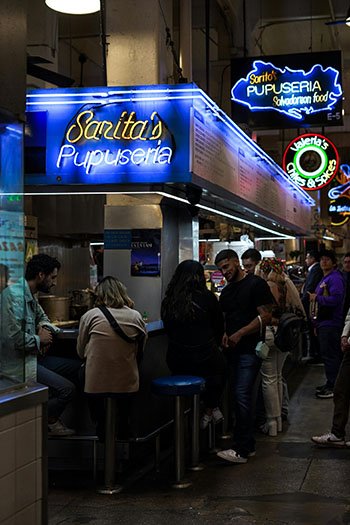
Pupusas became more popular in the United States during the 1980s and 1990s, when large numbers of Salvadorans migrated to the US due to civil unrest. As communities formed in cities like Los Angeles, Washington D.C., New York, and Houston, Salvadoran food became a way to maintain cultural identity and share traditions with others.
Pupuserías appeared these cities, often starting as home-based businesses before expanding into restaurants. As non-Salvadorans discovered the dish, demand grew. Today, pupusas can be found in many parts of the U.S., including in food trucks, markets, and even some grocery store freezer sections. Despite this growth, most pupusas in the U.S. are still made by hand in small, family-run businesses.
The growing popularity of pupusas has helped raise awareness of Salvadoran and Central American culture more broadly. They are now featured at food festivals, cultural events, and farmers’ markets. In areas with diverse Latin American populations, it’s common to see people from many backgrounds enjoying pupusas as part of the local food scene.
A Food That Builds Community
Pupusas are a tradition in many parts of Latin America. They bring people together. Whether they’re shared among family members on a Sunday afternoon or sold at a busy market stand, pupusas create moments of connection. The process of making them, that is, mixing the dough, shaping the rounds, adding the filling, and cooking them on a hot griddle, is a communal family activity. Often, it’s something learned by watching mothers, aunts, and grandmothers work with practiced hands.
In some ways, pupusas represent the idea that good food doesn’t need to be complicated. With a few simple ingredients and some care, they deliver comfort, nourishment, and joy. They remind people of home, of family gatherings, and of everyday routines that hold deeper meaning.
Even for those who didn’t grow up eating pupusas, the first bite often creates a sense of familiarity. With the soft corn dough, the melted cheese, the spicy crunch of curtido, it all feels like something that belongs in a shared cultural experience, even if it’s new.
Final Thoughts
Pupusas are a delicious and meaningful part of Central American culinary tradition. While they are most closely associated with El Salvador, their roots and presence extend across Guatemala, Honduras, and beyond. They reflect centuries of food culture shaped by Indigenous practices, colonial history, and modern adaptation.
Their continued popularity at home and abroad shows how a humble food can carry great cultural weight. Whether eaten on the street, at a family table, or in a restaurant halfway across the world, pupusas offer something that goes beyond flavor.

